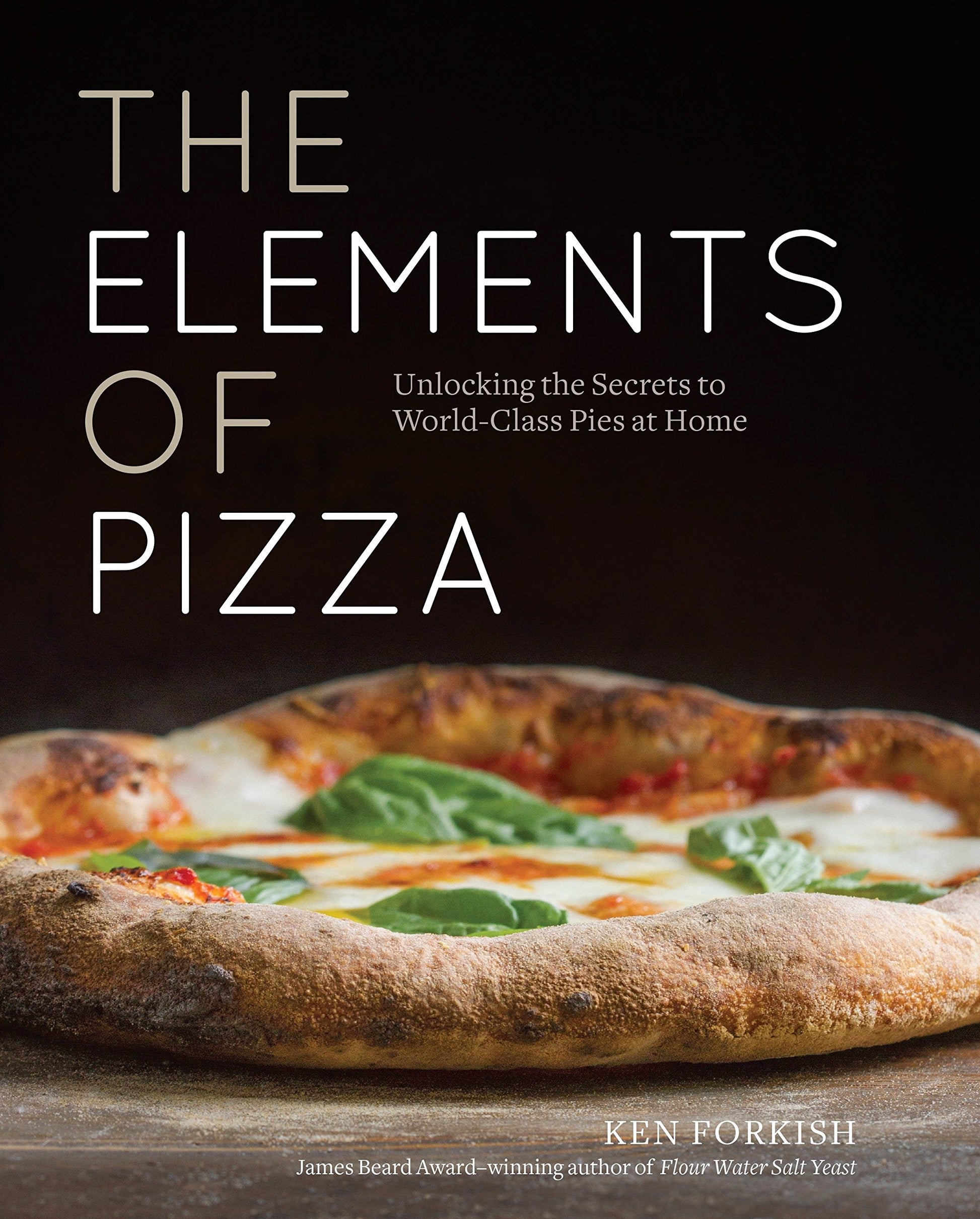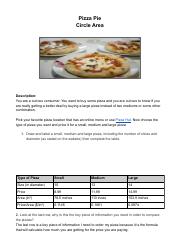Introduction
The Debate Over Whether Pizza Is A Pie Or Not
The age-old question of whether pizza is considered a pie has sparked passionate debates among food enthusiasts around the world. While some argue that pizza should be categorized as a type of pie, others firmly believe that it deserves its own distinct classification.
Various Perspectives On Defining Pizza As A Pie
There are several factors to consider when determining whether pizza can be labeled as a pie.
- Crust: One argument in favor of pizza being a pie is its crust. Like traditional pies, pizza has a dough-based crust that serves as the base for its toppings.
- Filling: Another perspective is that the toppings used on pizza can be compared to the fillings typically found in pies. From cheese and tomato sauce to various meats and vegetables, pizza is often loaded with flavorful ingredients, just like a pie.
- Structural similarities: Additionally, both pizza and pies have circular shapes, albeit with slight variations. Pies typically have a flaky or crumbly crust, while pizza crust tends to be thinner and more doughy. However, the circular shape is a characteristic shared by both.
- Distinct qualities: On the other hand, those who believe pizza should not be classified as a pie argue that it has its own unique qualities that set it apart. Pizza is typically savory rather than sweet, and it is commonly associated with Italian cuisine.
In conclusion, the question of whether pizza is a pie ultimately comes down to how one defines the term “pie.” The arguments for and against this classification reveal the complexities of culinary categorization and the diversity of opinions among food enthusiasts. Whether you consider pizza a pie or not, there’s no denying its popularity and the joy it brings to countless pizza lovers worldwide.
Historical Background
Origins Of Pizza And Pie
The origins of pizza and pie are both deeply rooted in ancient civilizations. While the exact origin of pizza is widely debated, it is believed to have originated in Naples, Italy in the 18th century. On the other hand, pies have a rich history that can be traced back to ancient Egypt, where they were often used as a way to preserve food. Pies eventually spread to various parts of the world, with each culture putting their own unique twist on the dish.
Similarities And Differences In Crust, Filling, And Baking Methods
When comparing pizza and traditional pies, there are distinct differences in their crust, filling, and baking methods. – **Crust**: Pies typically have a flaky or crumbly crust, while pizza crust tends to be thinner and more doughy.- **Filling**: Pies are often filled with various fruits, meats, or vegetables that are enclosed within the crust. In contrast, pizza toppings are spread on top of the dough.- **Baking methods**: Pies are typically baked in an oven at a lower temperature for a longer period of time, allowing the fillings to cook thoroughly. Pizzas, on the other hand, are baked at a high temperature for a shorter amount of time, resulting in a crispy crust and melted toppings.
These differences in crust, filling, and baking methods contribute to the ongoing debate on whether pizza can truly be classified as a pie. Ultimately, it is up to individuals to decide how they perceive and categorize these beloved culinary creations.

Pizza As A Pie
Historical Background
The historical origins of pizza and pie play a significant role in the debate surrounding whether a pizza should be considered a pie. While pizza is believed to have originated in Naples, Italy in the 18th century, pies have a long history that can be traced back to ancient Egypt. Pies were originally used as a means of food preservation and have evolved over time, with each culture adding their own unique twist to the dish.
Culinary Traditions And Regions Where Pizzas Are Commonly Referred To As Pies
In certain culinary traditions, such as in America, pizzas are commonly referred to as pies. This is due to the distinct cultural association of pizzas with the term “pie”. In these regions, the term “pie” is not limited to desserts or dishes with an open-top crust. Instead, it is broadened to include any dish with a crust and filling, which aligns with the characteristics of a pizza.
Shape And Method Of Adding Toppings As Defining Factors
One key argument against categorizing pizza as a pie is the shape of the dish. Pies are commonly recognized for their open-top shape, while a pizza is traditionally round and closed. Additionally, the method of adding toppings differs between the two. Pies have fillings encased within the crust, while pizzas have toppings spread on top of the dough.
Overall, the classification of pizza as a pie continues to be debated, with differing opinions based on historical origins, cultural associations, and the shape and method of adding toppings. Ultimately, it is up to individuals to determine how they perceive and categorize these beloved culinary creations.
Pizza As A Distinct Creation
Unique Characteristics Of Pizza That Set It Apart From Pies
The debate about whether pizza should be considered a pie often centers around the unique characteristics that differentiate it from traditional pies. While pies typically have a open-top shape and fillings encased within the crust, pizza has a round and closed shape with toppings spread on top of the dough. This distinction in shape and method of adding toppings is a significant factor in categorizing pizza as its own culinary creation.
Cultural Associations And Significance Of Pizza
Pizza holds a significant cultural significance in many regions, particularly in America, where it is commonly referred to as a “pie”. This cultural association has broadened the definition of pies to include any dish with a crust and filling. Therefore, even though pizza may not fit the traditional shape and filling requirements of a pie, its cultural relevance and terminology make it a distinct food category.
While the ongoing debate about whether pizza is a pie may never be fully resolved, it is important to appreciate the unique characteristics and cultural significance of pizza as a culinary creation. Ultimately, it is up to individuals to determine how they perceive and categorize these beloved dishes. So the next time you enjoy a slice of pizza, savor its deliciousness without getting caught up in the pizza vs. pie debate.
Analyzing Different Perspectives
Arguments Supporting Pizza As A Pie
- Shape and filling: While traditional pies generally have an open-top shape with fillings encased within the crust, pizza has a round shape with toppings spread on top of the dough. This similarity in structure can be seen as an argument for categorizing pizza as a type of pie.- Crust and filling: Both pies and pizzas have a crust and some form of filling, whether it’s sweet or savory. This similarity further adds to the argument that pizza should be considered a pie.- Terminology: In certain regions, such as America, pizza is commonly referred to as a “pie.” This cultural association has led some to include pizza within the category of pies.
Counterarguments Against Pizza Being A Pie
- Toppings on the surface: While pies generally have fillings encased within the crust, pizzas have toppings spread on top of the dough. This distinction in the way toppings are added sets pizza apart from traditional pies.- Cultural significance: While there may be cultural associations referring to pizza as a “pie,” it’s important to acknowledge that these associations might not align with the technical definition of a pie. Respect for cultural significance should not override the distinction between different culinary creations.
In the end, the debate over whether pizza is a pie may never be settled definitively. It ultimately comes down to individual interpretations and perceptions. The distinct characteristics of pizza, including its shape, method of adding toppings, and cultural associations, make it unique and deserving of its own category. So, whether you choose to classify pizza as a pie or not, enjoy its deliciousness without getting caught up in the ongoing debate.

Subjectivity Of The Debate
Individual Interpretation And Personal Preferences
Arguments surrounding the classification of pizza as a pie often come down to individual interpretations and personal preferences. While some may see the similarities in shape and filling between pies and pizzas as evidence that pizza is a type of pie, others may emphasize the distinctiveness of pizza and argue for it being its own category. Ultimately, how one views the relationship between pizza and pies depends on their personal perspective and culinary background.
Importance Of Recognizing The Subjective Nature Of The Debate
It is crucial to acknowledge the subjective nature of the pizza vs. pie debate. While it may seem trivial to some, this discussion holds significance in the culinary world as it challenges our understanding and definition of food categories. Recognizing the subjectivity of this debate allows for a more inclusive and open-minded dialogue, where diverse perspectives can coexist. Rather than trying to definitively settle the debate, it is more valuable to appreciate the variety and uniqueness of different culinary creations, including pizza and pies. So, whether one classifies pizza as a pie or not, it is essential to respect individual opinions and enjoy the deliciousness these dishes offer.
Pizza Vs. Pie: The Verdict
Examining The Evidence And Opinions From Both Sides
Arguments surrounding the classification of pizza as a pie often come down to individual interpretations and personal preferences. Some argue that the similarities in shape and filling between pies and pizzas make pizza a type of pie. They point to the round shape, doughy crust, and the variety of toppings that can be seen in both pies and pizzas. On the other hand, others emphasize the distinctiveness of pizza and argue for it being its own category. They highlight the thin, crispy crust and the unique flavor combinations that set pizza apart from traditional pies.
It is crucial to acknowledge the subjective nature of the pizza vs. pie debate. This discussion challenges our understanding and definition of food categories. Recognizing the subjectivity allows for a more inclusive and open-minded dialogue, where diverse perspectives can coexist.
Exploring The Final Conclusion On Whether Pizza Is A Pie
In conclusion, the debate regarding whether pizza is a type of pie has no definitive answer. It ultimately boils down to personal perspective and culinary background. While some may classify pizza as a pie based on shared characteristics, others may consider it a distinct creation. Regardless of the label, it is vital to respect individual opinions and appreciate the variety and deliciousness that both pizza and traditional pies offer. Whether you enjoy a cheesy pizza or a fruity pie, there is no denying the pleasure that these culinary creations bring to our taste buds.
Conclusion
Summary Of The Debate And Key Points Discussed
The debate over whether pizza can be considered a type of pie has been a long-standing topic of discussion among food enthusiasts. Arguments for both sides often center around the similarities and differences between pies and pizzas. Those in favor of classifying pizza as a pie point to the round shape, doughy crust, and variety of toppings that can be found in both. However, others argue that pizza has distinct characteristics, such as its thin, crispy crust and unique flavor combinations, that set it apart from traditional pies.
Encouraging Individual Perspectives And Personal Interpretations
Ultimately, the classification of pizza as a pie is subjective and based on personal perspective and culinary background. It is important to recognize and respect diverse opinions and appreciate the variety and deliciousness that both pizza and traditional pies offer. Whether someone enjoys a cheesy pizza or a fruity pie, the enjoyment and pleasure that these culinary creations bring to our taste buds are undeniable. The debate serves as a reminder that food categories can be fluid and open to interpretation, allowing for a more inclusive and open-minded dialogue.
FAQ: Is Pizza a Pie? Debating the Semantics of Pizza as a “Pie”
Q: Is pizza considered a pie?
A: The question of whether pizza is technically considered a pie is a matter of debate among food enthusiasts. While some argue that a pizza can be considered a type of pie due to its baked dough and filling, others argue that the term “pie” is more commonly associated with sweet, fruit-filled desserts.
Q: Where did the debate about pizza being a pie originate?
A: The debate about whether pizza is a pie primarily stems from the historical roots and the way different cultures have interpreted and named this popular dish. The term “pie” has traditionally been used to describe both sweet and savory dishes, resulting in various interpretations across different culinary traditions.
Q: What defines a pie?
A: A pie is generally defined as a dish with a baked crust, usually made of pastry or dough, and some sort of filling, which can include sweet or savory ingredients. The crust typically encloses the filling, creating a compact structure.
Q: How is a pizza similar to a pie?
A: Pizza shares certain similarities with pies. Both contain a baked dough, albeit prepared differently. In both cases, there is a base or crust that holds the toppings or filling. Furthermore, like pies, pizzas come in a variety of flavors and can be customized with different ingredients.
Q: How is a pizza different from a pie?
A: While pizzas and pies share some similarities, there are distinct differences that set them apart. Pies generally have a more enclosed structure with a top crust covering the filling, while pizzas tend to have an open-face design where the toppings are visible. Additionally, the fillings in pies are typically sweet or savory, while pizzas predominantly feature savory toppings.
Q: What are some arguments in favor of pizza being considered a pie?
A: Those in favor of classifying pizza as a type of pie argue that it meets the basic criteria of a baked dish with a crust and filling, just like traditional pies. They point to the word “pie” being used historically to describe various dishes, which would include pizza.
Q: What are some arguments against considering pizza a pie?
A: Opponents of labeling pizza as a pie argue that the term “pie” is more often associated with desserts, such as apple pie or pumpkin pie. They believe that using “pie” to describe a pizza may cause confusion and dilute the specific essence of each dish.
Q: So, is pizza officially considered a pie?
A: There is no definitive consensus on whether pizza is officially classified as a pie. The classification largely depends on personal interpretation, regional preferences, and cultural traditions. Ultimately, whether you consider a pizza a pie or not is up to you!
Q: Can we enjoy pizza without getting caught up in semantics?
A: Absolutely! The debate about whether pizza is a pie should not detract from the pure enjoyment of this beloved food. Regardless of its classification, pizza continues to be a delicious and versatile dish enjoyed by people worldwide.
Please note that these answers are based on culinary perspectives and cultural interpretations and may vary depending on individual opinions and regional traditions.

Welcome to Sahara Cafe Hollywood, the best Latin food restaurant in Hollywood, Florida! Our journey began with a passion for bringing Latin cuisine’s vibrant flavors to Hollywood’s heart. Located at 2000 Harrison St, Suite 1, Hollywood, FL 33020, United States, Sahara Cafe has become a beloved culinary destination for locals and visitors alike. Since our establishment, Sahara Cafe Hollywood has been dedicated to delivering an authentic and memorable dining experience. Every dish we create reflects our commitment to serving the finest Latin cuisine. From sizzling fajitas to mouthwatering empanadas, each item on our menu is crafted with the freshest ingredients and traditional recipes that capture the essence of Latin American culinary heritage.